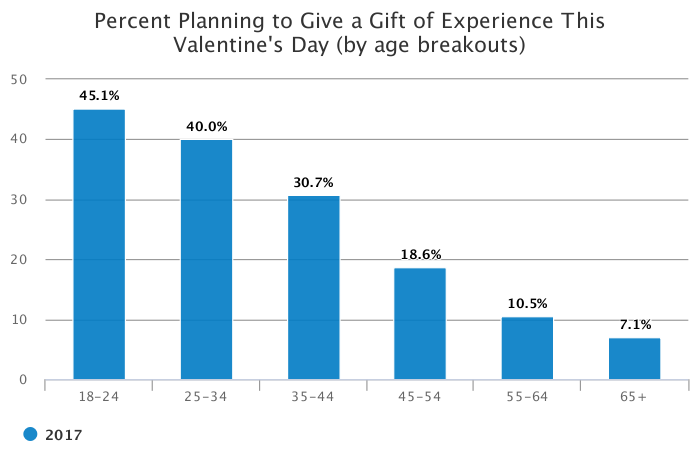
In case you’ve missed the red and pink signs or decadent chocolate displays, Valentine’s Day is just around the corner. As retailers gear up for one of the first gifting events of 2017, NRF’s research team has highlighted a few consumer trends:
The most exclusive dinner reservation may be at home
It used to be that all you needed to impress your date was a candlelit dinner at a favorite restaurant. However, according to NRF’s annual Valentine’s Day Spending survey conducted by Prosper Insights & Analytics, consumers plan to spend less on an evening out compared with last year.
Rather than trying to snag a reservation for an elegant prix fixe meal, customers may opt for a gourmet experience in the comfort of their own homes. Popular meal services like Blue Apron and Hello Fresh provide foolproof instructions and pre-measured ingredients so that even the most inexperienced chefs can create restaurant-style meals; Blue Apron’s “Love at First Bite” campaign encourages customers to consider them for Valentine’s Day. It’s not just subscription services that are taking note: Whole Foods’ blog features recipes and wine pairings for the perfect Valentine’s menu.
Younger consumers want to share an experience
For the past two years, NRF has measured consumer interest in gifts of experience — everything from a couples’ dance class to concert tickets to a hike. Nearly a quarter of consumers said they plan to give a gift of experience for Valentine’s Day, though that figure is significantly higher among both younger (18-24) and older (25-34) millennials.

NRF Valentine's Day Spending Survey, conducted by Prosper Insights & Analytics
Retailers targeting millennials this Valentine’s season may consider suggesting experiential gift ideas such as how to plan an at-home spa date or all the essentials for a romantic weekend getaway.
Do you have an emoji for that?
The vast majority (83 percent) of Valentine’s Day celebrants own a smartphone. In a world where everyone from your grandmother to your 13-year-old niece is texting, consumers might turn to emojis and Snapchat filters to share their messages of love rather than traditional cards. Only 47 percent of consumers are planning to give a Valentine’s Day card this year, compared with 63 percent a decade ago. Companies from Dunkin’ Donuts to Moët & Chandon have noted this trend, introducing Valentine’s Day emoji keyboards and mobile messaging cards that allow customers to personalize how they ask “Will you be mine?”
One thing that can’t be shared with an emoji? Candy. Turns out consumers still have a sweet tooth that no virtual sticker or smiley face can replace: Half of Valentine’s Day celebrants plan to make a candy purchase this year.
Consumers are willing to spend with the right motivation
In a recent NRF flash poll conducted by ORC International, 92 percent of consumers said they were willing to spend an extra $10 on Valentine’s Day. For those who would spend more, the most popular reason is a really good sale or promotion (49 percent), though more than a third indicated they’d be willing to spend a little more if they found the perfect gift for someone — which may be good news for retailers featuring gift guides. Target, Macy’s and Nordstrom have gift recommendations for everyone from pets to significant others to co-workers. In addition to traditional lists, this year some retailers are also featuring whimsical gifts at lower price points, perhaps hoping to inspire unplanned purchases.

NRF’s Valentine's Day Consumer Flash-Poll, February 2017, conducted by ORC International. Among those who indicated they could be convinced to spend an extra $10 this Valentine's Day. Only top responses shown.